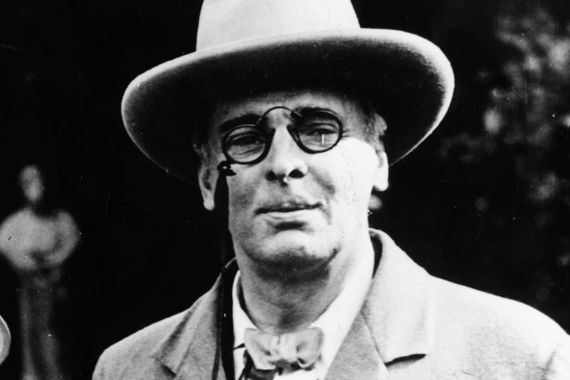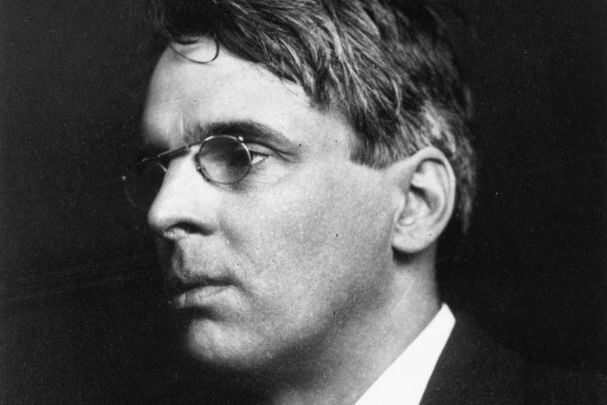First Irish Nobel Laureate, William Butler Yeats was an organic bridge between Orient and Western countries, and specifically between Indians and Irish which is quite amply manifested in his writings.
Irish revivalism and Indic philosophy have been two important components of his writings and Yeats propagated them through his works so exceptionally well that people around the world still get wonderstruck by their exquisiteness.
As per Frank N. Magill, William Butler Yeats strove to reawaken in his people a sense of the glory and significance of Ireland's historical and legendary past.
Yeats wrote poems about Irish history and figures of Celtic mythology, including "To the Rose upon the Rood of Time," "To Ireland in the Coming Times," and "The Song of Wandering Aengus."
In the 1890s, Yeats began to take an increasing interest in Irish nationalism. He founded various literary societies and even joined the Irish Republican Brotherhood, although he was later to leave it after becoming disillusioned with politics. In 1922, Yeats was appointed as Senator for the newly formed Irish Free State and served for two terms. The Nobel Prize in Literature 1923 was awarded to him "for his always inspired poetry, which in a highly artistic form gives expression to the spirit of a whole nation."
Yeats and Irish Revivalism
In 1882 together with O’Leary and Douglas Hyde, Yeats founded the National Literary Society which aimed at publicizing the literature, legends and folklore of Ireland and he also co-founded the Irish Literary Theatre in 1899 with the purpose of reviving Irish literature.
As per McKinsey, the conspicuous "Celtic swerve" in Yeat's epic poem "The Wanderings of Oisin" was an opportunity for the Irish poet "to showcase the possibilities of a distinctly Irish alternative" to the poetry and culture of the "Anglo-Saxon soul," which had been sullied by materialism and scientific calculation.
The heavy use of Irish mythology in "The Wanderings of Oisin" can be read as Yeats's declaration of national allegiance.
A Book of Irish Verse (1895), was edited by Yeats and dedicated "To the Members of the National Literary Society of Dublin and the Irish Literary Society of London," featured poetry by Rolleston, Hyde, Tynan (Hinkson), Johnson, AE pseudonym of George William Russell, several other friends, and notes and an introduction by himself. Indeed W. B. Yeats led an Irish revival.
Yeats and Indic Philosophy
Yeats first became interested in India through the activities of the Dublin Hermetic Society (of which he was elected President at the first meeting) and the Dublin Theosophical Society.
In an 1898 newspaper article entitled “The Poetry of AE,” Yeats describes a typical meeting of the Hermetic Society. Gathered in a rented room of York Street, Dublin, a small group of young enthusiasts “began to read papers to one another on the Vedas, and the Upanishads, and the Neoplatonists, and on modern mystics and spiritualists”
W. B. Yeats’ understanding of Eastern occultism came mainly through his study of the Indian scriptures, particularly The Upanishads, and from his contact with three eminent Indians - Mohini Chatterji, Rabindranath Tagore, and Purohit Swami.

W.B. Yeats.
The titles of some of his famous poems were taken from Indian names, Let us consider his poems, 'Kanva on himself' and 'Kanva, the Indian, on God.' 'Kanva' is a classical Indian name. 'Kanva' was the foster father of Sakuntala in the famous Sanskrit drama written by Kalidasa the 'Abhigyan Sakuntalam.'
One of his dramatic poems is entitled 'Anashuya and Vijaya.' The name Anashuya is also associated with Kalidasa's drama. In the drama 'Sakuntala', Anashuya' is a playmate of Sakuntala. In addition to 'Kanva' and 'Anashuya', W.B. Yeats used two other proper names in his dramatic piece. These names are 'Vijaaya' and 'Amrita'.
In the "The Ten Principal Upanishads (London, 1936)" translated by Shree Purohit Swami and W. B. Yeats, we find that Yeats had come to see an affinity between Celtic lore and Indian mythology. In his preface to the translation of Upanishads, he writes: "It pleases me to fancy that when we turn towards the East, in or out of Church, we are turning not less to the ancient west and north; the one fragment of pagan Irish philosophy that came down, 'the Song of Amergin,' seems Asiatic”
Yeats studied The Bhagavad-Gita or "Lord's Song" under Swami Purohit and Yeats and Swami also became friends.
During their friendship, Yeats wrote introductions to Swami's translation and annotation of Patanjali's Aphorisms of Yoga, to Swami's autobiography, and to a partial autobiography by Swami's master.
In Swami and his teachings, he met "Asia at its finest" and it seemed as if he found "something I have waited for since I was seventeen years old."
Irish who became Ambassadors of Indic Culture
W. B. Yeats, Annie Besant, and Charles “Hindu” Stuart have played an important role in depicting Indic culture as a highly evolved culture to the West that needs study, unlike Thomas Babington Macaulay who wrote in his “Minute on Education” that “A single shelf of a good European library was worth the whole native literature of India and Arabia".
When several nationalities were promoting theories of their superiority, the aforementioned Irish became organic bridges between the East and the West for a better understanding of humanity with mutual respect and amity.
Like many Greeks of the ancient past who came to India, many Irish who came to India in modern times also adopted Indic culture and spiritualism and propagated them through their works.

Love Irish history? Share your favorite stories with other history buffs in the IrishCentral History Facebook group.
The relationship between Yeats and Nobel Laureate Rabindranath Tagore’s Gitanjali is iconic of Indo–Irish connections, and the Irish poet’s introductory remarks in Gitanjali are among the most-cited in academic treatises on the subject. While Tagore was the first Indian to win the Noble Prize Yeats was the first Irish to win the same. Tagore evaluates Yeats's poetry as an expression of "the heart of Ireland".
The “Nightingale of India” Sarojini Naidu’s first book of poems “The Golden Threshold,” featured a drawing by John Butler Yeats (father of W. B. Yeats) depicting Sarojini Naidu (Nightingale of India) as a young woman wearing a white dress with ruffles.
Let’s hope more and more Irish show interest and learn Indic cultures and vice versa more and more Indians learn Irish culture, this shall bring both India and Ireland even closer at a time when Ireland’s Taoiseach is an Indian-Irish Leo Varadkar.
This article was submitted to the IrishCentral contributors network by a member of the global Irish community. To become an IrishCentral contributor click here.




Comments